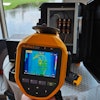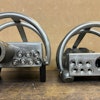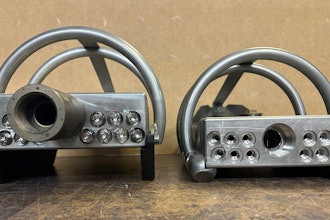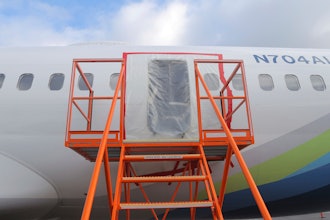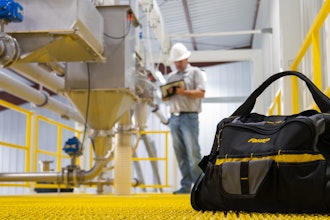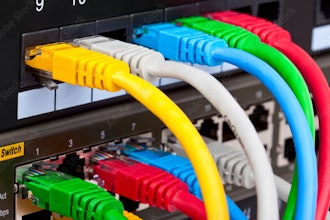As sanitary processing facilities strive to provide a quality product and safeguard against contamination, processors are always looking for ways to give their cleaning programs a boost. Here are 10 easy improvements you can make to upgrade the sanitation results in your processing plant.
1. Create a Culture of Clean
Initiate a dialogue with upper management about how they can support a facility-wide culture of sanitation and food safety with initiatives such as:
- Communicating with employees about the importance of sanitation.
- Engaging all employees in sanitation activities.
- Training and reinforcing good food safety behaviors.
- Creating a food safety culture team.
- Maintaining a customer-driven focus for all sanitation activities.
- Measuring and re-assessing your food safety culture.
- Making a long-term commitment to sustaining and improving food safety.
2. Get Everyone Involved
Get everyone on the sanitation bandwagon. Include maintenance staff, production workers, office personnel and top management in training and activities to increase their understanding of how crucial sanitation is to their job security. Solicit improvement suggestions from all departments and create “clean teams” to help with food safety audits, inspections or compliance checks.
Include executives and managers in sanitation activities to remind them that sanitation is fundamental to “bottom-line” issues like food safety, quality and productivity.
3. Know Your CGMP
The Food and Drug Administration (FDA) has outlined current good manufacturing practices (cGMP) for food manufacturing facilities in the Code of Federal Regulations, Title 21, Part 110 (21 CFR 110). This document covers the FDA requirements for food manufacturing and serves as one basis for FDA inspections. Share copies of the cGMP with your sanitation staff and use it as a guide for organizing your cleaning programs. It will help focus your sanitation program vision and keep your sanitation efforts headed in the right direction.
4. Build a Structure
Establish a documented master cleaning schedule that is clear, thorough and sustainable. Scheduling cleaning tasks months in advance will allow you to maintain proper sanitation standards despite fluctuations in production and available resources. It’s your schedule, so structure your cleaning methods and routines to suit your plant environment. And remember to consider your available manpower, production schedules and any special equipment or services you may need. Your schedule should include things like:
- A complete list of all areas, equipment and tools to be cleaned.
- Specific dates or frequencies for each cleaning task.
- Lists of those responsible for doing the cleaning.
- Specific instructions for all cleaning tasks.
- A verifiable checklist containing each cleaning step.
- Guidelines for cleaning buildings and grounds.
5. Train and Cross-Train
Hold regularly scheduled sanitation training meetings. Invite some of your suppliers to conduct training classes about their products and services. Cover topics such as:
- Good food safety practices and cGMP requirements.
- Proper use of chemicals, tools and equipment.
- Appropriate personal hygiene practices.
- The science of how cleaning agents work.
- Proper use of personal protective gear and chemical safety.
- New trends in sanitation.
- Cross-train sanitarians to function in multiple roles.
6. Celebrate Success
Identify some key performance indicators (KPI) for your sanitation program and use them to set goals. Track the progress toward your goals on graphs or charts and share the results with everyone. Recognize goal achievements with a special reward or activity. Some of your sanitation KPIs might include:
- Consecutive days without a contamination issue.
- Shelf life improvements
- Cleaning tasks completed on schedule.
- Swab test measurement results.
- Plant inspection results.
- Employee sanitation training hours.
7. Evaluate Your Equipment and Plant Design
Conduct an inspection of your equipment and building to identify machinery or spaces that are troublesome to clean effectively. Sanitary design makes cleaning faster and less expensive, so submit a list of non-hygienic design elements in your plant to management for redesign or replacement.
Hygienically designed equipment should be:
- Cleanable and hygienically compatible with other plant systems.
- Made of materials compatible with cleaning solutions.
- Accessible for maintenance, cleaning and inspection.
- Free of recesses, corrosion or areas that could collect product or liquid.
- Able to facilitate validation and other sanitary protocols.
Hygienically designed facilities should have:
- Distinct hygienic zones established within the facility.
- Protocols established to control the flow of personnel and material.
- Design elements to control water accumulation.
- Controlled air, temperature and humidity.
- Building elements that facilitate sanitary conditions.
- Utility systems that are designed to prevent contamination.
8. Verify
Include documented testing in your cleaning schedule to verify that your cleaning system performs as expected. Here are some common techniques for cleaning verification:
- Organoleptic Testing – this is a fancy term for simply using your sight, smell, and touch to check for unclean surfaces.
- Surface Moisture - water tends to bead up and become visible in the presence of soil.
- Dyes - specific dyes can be applied to a surface to make the soil visible.
- ATP Testing – adenosine triphosphate (ATP) is a compound found in all organic material. Bioluminescence testing for residual ATP on surfaces is quick and easy.
- Microbial Testing - swab samples of surface residue can be tested for the presence of microorganisms.
9. Emphasize Personal Cleanliness and Conduct
Encourage your staff to demonstrate good personal behaviors such as:
- Properly dispose of any trash, paper scraps or packaging that is lying around.
- Prohibit food or tobacco products in manufacturing areas.
- Reinforce the use of hair nets, beard nets, gloves, and shoe covers where required.
- Clean up product or ingredient spills immediately.
- Restrict staff members with communicable ailments from food handling areas.
- Require frequent hand washing and the use of hand sanitizers.
- Remove jewelry before entering the food handling area.
10. Color Code
Color coding tools and containers can help eliminate many cross-contamination issues. Divide production areas into zones based on product risk. Assign each zone its own color for tools and containers. Not every area needs a different color, so keep it simple. Too many colors can make the system confusing and ineffective. Clearly mark the storage areas for the tools and containers in the same area where they are used.
Eric Gore is the Technical Director for Central States Industrial based in Springfield, MO.

